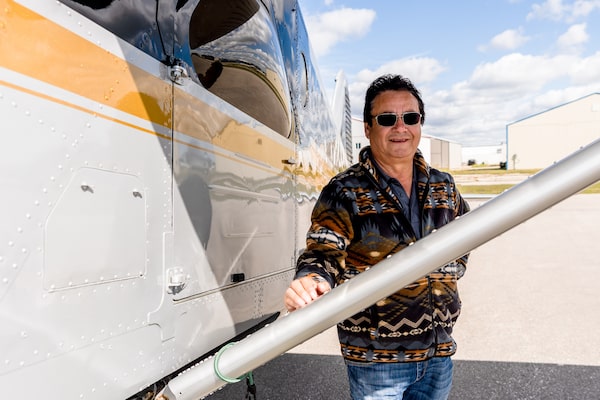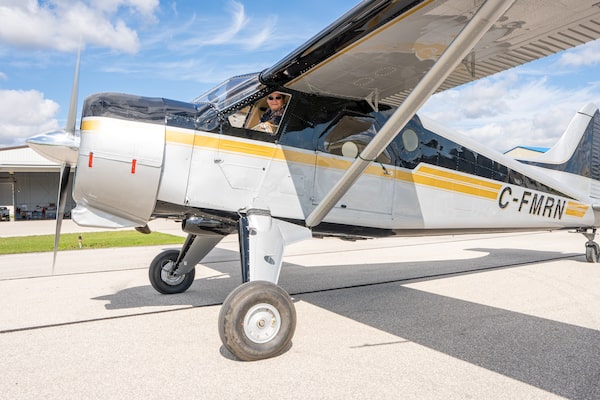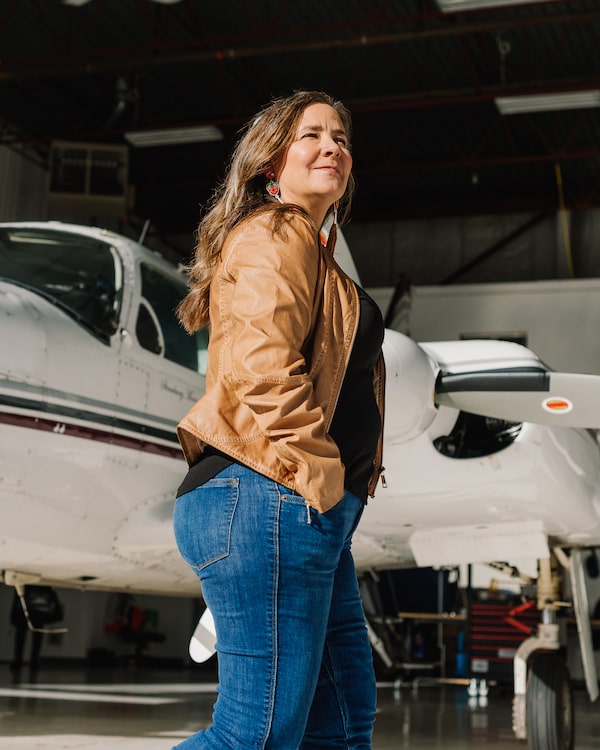
After watching countless pilots fly into his hometown as a boy, Oliver Owen launched his own airline, Amik Aviation, in 2004 to serve remote communities in Manitoba and Ontario.Photo supplied by Oliver Owen
Whenever Oliver Owen saw a float plane in the sky from his childhood home, he ran to greet the pilot.
Growing up in Little Grand Rapids First Nation, a remote community about 280 kilometres northeast of Winnipeg, Owen longed to do any task that would make him feel like part of an air crew.
From the age of six, at a dock a few blocks from his house, he would help pilots tie a rope around a plane. Some days, when a plane left, he would wait for hours on the dock for the next crew to come in.
As he got older, Owen remained fascinated with air travel. “I wanted to fly so badly,” Owen says. “My friends were out partying, they tried dragging me out, and I just said, ‘No, I just want to get my pilot’s licence.’”
Like the nearly 200 other fly-in communities across Canada, Little Grand Rapids, with its population of 810 people, relies on airlines to transport goods and connect people with other parts of the country.
The isolation and lack of immediate access to resources leave these remote communities vulnerable.
“They need air transportation to connect them to basic human rights,” says Teara Fraser, a Métis woman and founder of Iskwew Air, an airline that offers charter services and scheduled flights from Qualicum Beach to Vancouver.
Despite the heavy reliance on airlines, when Owen left Little Grand Rapids to get his licence in Winnipeg decades ago, there wasn’t the support for Indigenous pilots there is today.

Amik Aviation has five planes in its fleet, all of which are used for cargo and passenger transportation.Photo supplied
He felt homesick for days at a time. He frequently ran out of money and had to pick up various odd jobs to keep his dream afloat.
“I got a job at the airport cleaning airplane hangars,” Owen says. “I was getting paid $2 an hour and my paychecks went to flight school. I would wait two weeks [to get paid] to go flying.”
After earning his pilot’s licence in Winnipeg in 1978, Owen flew for a couple northern airlines before launching his own business, Amik Aviation, in 2004. The airline offers daily and charter service to several remote communities – including Little Grand Rapids – in Manitoba and Ontario from St. Andrews Airport in Winnipeg.
In the nearly two decades since Amik Aviation took off the ground, dozens of other Indigenous-owned airlines have taken flight across Canada, including Rise Air and Gulf Island Seaplanes. An Inuit-led merger also resulted in the creation of Canadian North in 2019.
Now, as many Canadian airlines grapple with a pilot shortage in the wake of the COVID-19 pandemic, initiatives to support Indigenous pilots are gaining more steam.
This fall, for example, Canadian North teamed up with Mount Royal University to offer flight training support to Inuit pilots.
“Canada has a shortage of pilots,” says Shelly De Caria, an Inuk woman and president and CEO of Canadian North.
“We thought it would be great to encourage Inuit to go to school … [then] go back home and operate for our airline for their community.”
Fraser also recently launched a training program under her aerospace tech company, elibird aero. And the Atik Mason Indigenous Pilot Pathway program – launched by the Manitoba Keewatinowi Okimakanak advocacy group earlier this year – is hoping to remove the financial obstacles that may prevent Indigenous folks from pursuing an aviation career.

Air travel is a necessity for remote communities in Canada, says Teara Fraser, the founder of Iskwew Air.Photo by Alana Paterson
All together, De Caria says, the programs are showing the next generation of Indigenous pilots that a career in aviation is possible.
“When I was six, seven, nine years old, there were no Inuit in these positions,” De Caria says. “It was just a dream.”
The movement comes five years after a labour report by the Canadian Council for Aviation and Aerospace found that Indigenous people make up only three per cent of the aviation work force – a figure that Owen believes is changing.
“I think they see others that are actually doing it,” Owen says.
Indigenous pilots can better serve remote communities with their knowledge of the community’s needs compared to other airlines, says Owen, who has been flying over Manitoba and northern Ontario for over 40 years.
“Everybody knows me,” he says, adding that he charges locals less than other residents for flights.
“They deserve that because they’re in a remote community.”
With more incentives for Indigenous pilots than ever before, Owen often advises people in his community to get into aviation.
“My nephew, he’s interested in flying and I said, ‘Go for it! There is money there for you,’” he says.
One in a regular series of stories. To read more, visit our Indigenous Enterprises section. If you have suggestions for future stories, reach out to IE@globeandmail.com